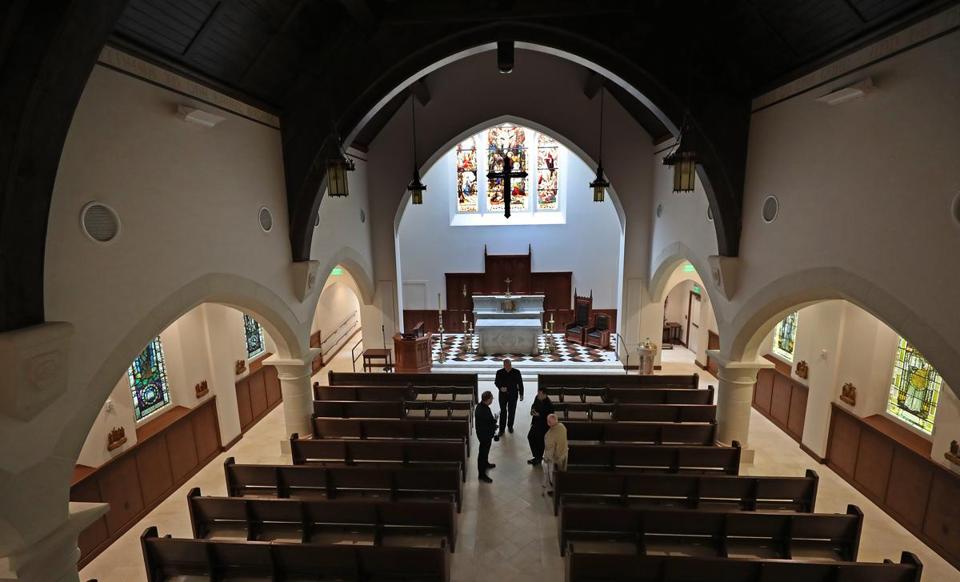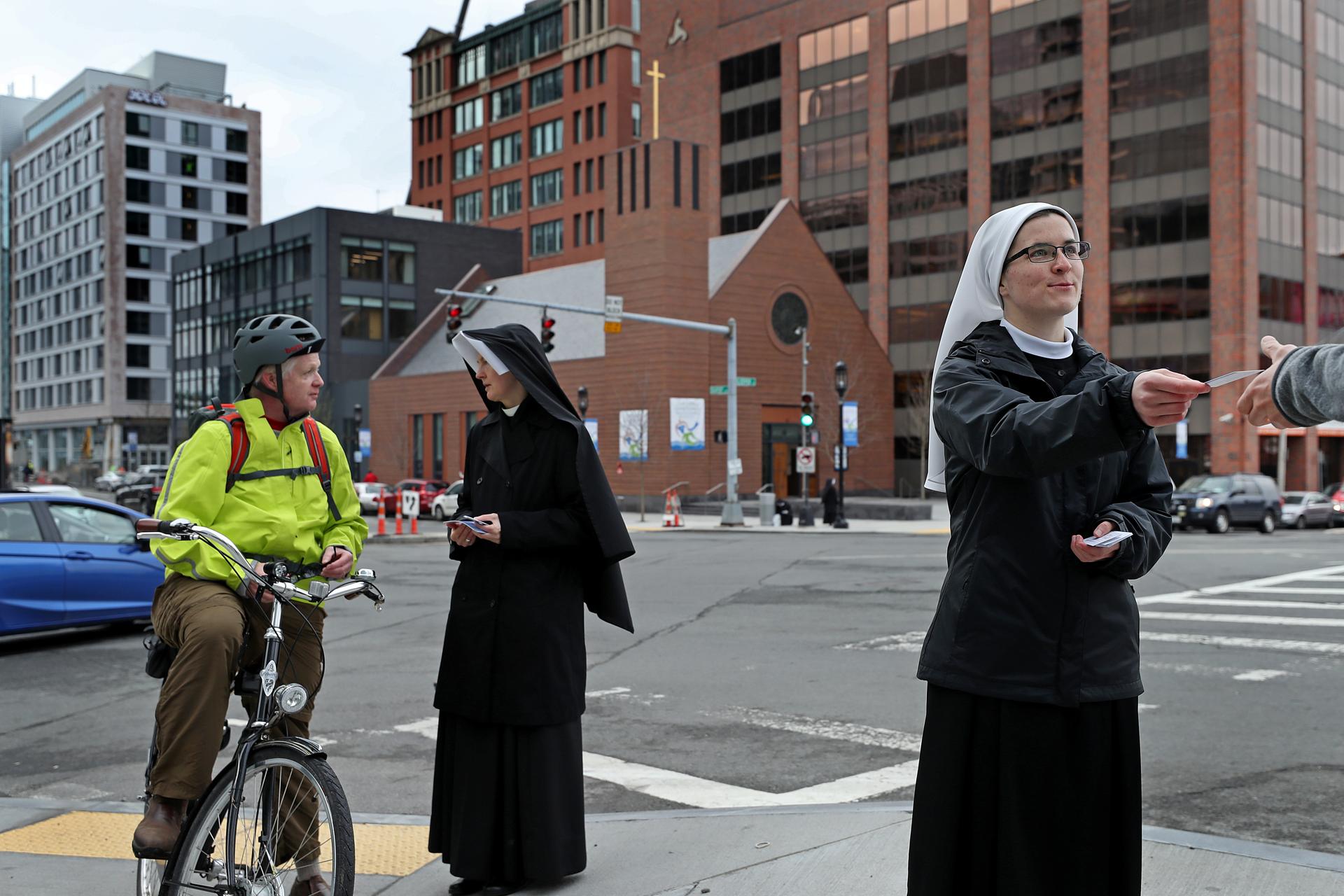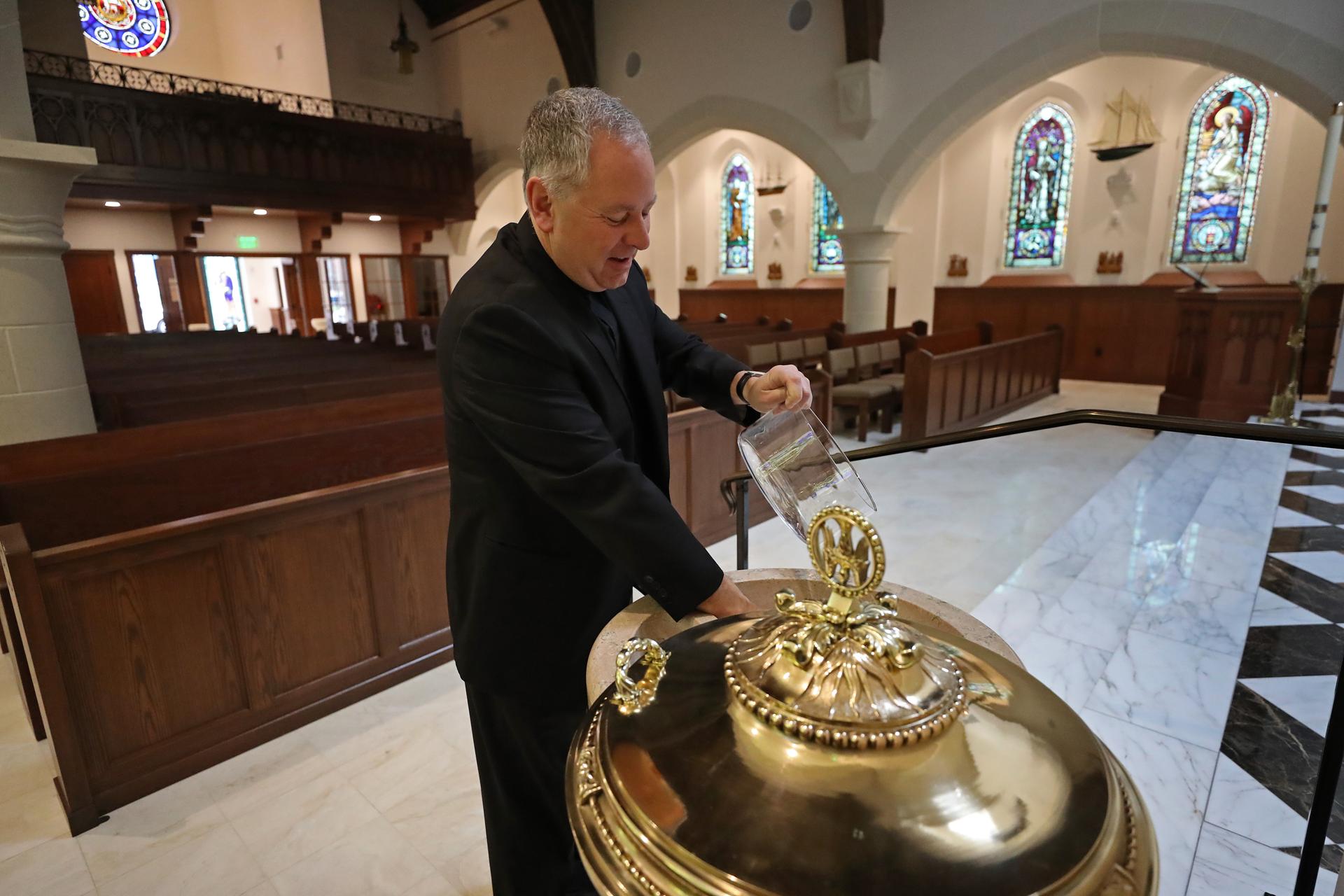The Archdiocese Is Used to Closing Churches. Now, It’s Opening One
By Lisa Wangsness
The Archdiocese of Boston has been closing churches in the city for much of the past 13 years, especially in old ethnic enclaves in South Boston, East Boston, and the South End. On Sunday, it will open a brand new Roman Catholic church in the city for the first time in more than 60 years. Our Lady of Good Voyage Shrine stands on Seaport Boulevard just over the Evelyn Moakley Bridge from downtown at the gateway of the Seaport District, a neighborhood that best represents the city’s high-tech future. “We have the best location you can imagine,” said the Rev. James Flavin, episcopal vicar of the archdiocese’s central region. “When you come over the bridge, we’re the first building you see.” The angular brick structure — which incorporates nautical flourishes as testament to its seaside location — stands as a kind of triumph for the Catholic Church, its profile diminished significantly in recent years because of the priest sexual abuse crisis and an increasingly secular culture. Though dwarfed by the sleek glass and steel buildings nearby, Our Lady of Good Voyage is nevertheless highly visible; the 14-foot thin gold cross on its bell tower seems almost suspended in the air. The archdiocese sees the new 250-seat shrine as an invaluable tool for promoting the church as a place to find respite from the rush of modern life and for building community in a neighborhood where the richest and poorest pass one another on the street but rarely meet socially. Millennial up-and-comers and empty nesters live in the luxury condos; workers, many of them immigrants who live just north of the city, clean the rooms and prepare the food in the fancy hotels and restaurants; tourists visit from around the world. Some 100,000 people walk by each day, church officials said, citing the city’s research. “The whole theory behind this is open doors,” said the Rev. Paul Soper, secretary for evangelization and discipleship for the archdiocese, beaming as a mild spring breeze blew into the church narthex on Thursday afternoon. Behind him, in the doorway, light shone through a stained-glass window featuring St. Peter, the founder of the church and a fisherman, holding a scroll with the words Jesus used to call his disciples: “Follow me and I will make you fishers of men.” The shrine, which cost about $10 million to build, will be open to visitors at least 12 hours a day and offer Mass twice a day, at 7:30 a.m. and 12:10 p.m., with confession before and after. A priest will be available to talk for several hours in the late afternoon. “We really want this just to be a place where someone can talk to a priest anytime,” said Flavin, rector of the new church.
The shrine replaces the Our Lady of Good Voyage chapel, a modest but beloved brick structure on Northern Avenue that was built in 1952 as a place for dock workers and sailors to pray. John B. Hynes III, CEO of Boston Global Investors, the developer of the 23-acre Seaport Square project, wanted the site for an office building, so he negotiated a deal with the archdiocese to tear down the chapel and build a new one nearby. “Back in 2007, my assumption was that the church was closing parishes around the city and this one wasn’t heavily utilized, so I thought this would be a likely candidate for a cash sale,” he said. “They said, ‘No, we don’t want to sell it, we want to become a part of the growing district.’ “So I said, ‘We’ll get back to you,’ ” he said. Designing the shrine took three years of meetings with city planners, church officials, and architects, Hynes said. The goal was to wind up with a building that looked and felt like a Catholic church, but that also fit in with the neighborhood. “The city wanted to see something slick and hip,” Hynes said. “The city was pushing for a museum-quality innovative design. . . . But the church was uncomfortable with that. They were more comfortable with something more traditional.” The result is a little of both. The brick exterior refers to the Seaport of yesteryear but looks modern. The archdiocese wanted a steeple, Hynes said, but the city feared it would dominate the skyline. For now, there is a bell tower strong enough to support a steeple in the future. Ethan Anthony of Cram & Ferguson Architects in Concord, who designed the interior of the building, said Cardinal Sean P. O’Malley, the archbishop of Boston, wanted the church to have a marine sensibility, much like the old chapel, which held its last Mass on Easter Sunday last weekend. “He felt like a ship was a symbolic representation of a journey through life, and a spiritual journey,” Anthony said. The ceiling looks like the hull of a wooden boat, a reference to the “bark of St. Peter,” a symbol of the church, Flavin said. Six models of old Boston ships, including the USS Constitution and a Boston light ship, hang from the ceiling. A brass ship’s bell in the bell tower chimes the hour. Inside, a wooden statue depicts the Virgin Mary as Our Lady of Good Voyage, holding the infant Jesus in one hand and a ship in the other. The statue was hand-carved in Oberammergau, a German village known for its religious art. The new church incorporates windows and furnishings from the old chapel and from nearby parishes that have been closed. Whether the new church will help the Catholic Church recover some of its former strength in South Boston remains in question. The archdiocese has closed the parishes of Sts. Peter and Paul and St. Augustine, and St. Vincent de Paul church remains in limbo. That church has been closed since part of its ceiling fell in 2015; Flavin said the estimated cost of repairing the ceiling is $3 million. The Mass collections the weekend it fell, he said, totaled $73. Flavin and other priests who will help staff the church plan to work especially hard to bring in the next generation of Catholics. Some 12,000 people between the ages of 18 and 32 live in South Boston, according to the city’s research, Flavin said; national surveys and his own informal research suggest they are inclined to be spiritual but not religious. He hopes the new shrine — a sacred space that welcomes visitors and is not tied to a parish but directly overseen by O’Malley — can help people find ways to serve and connect with one another through community service. The new generation may also look to the church for some of its more traditional functions. Flavin said 27 couples have already booked weddings in the new shrine. And a couple of weeks ago, Flavin got a call from a young man in his 20s in South Boston. He had the flu. He had no food at home, and didn’t know his roommates well. He called his mother, who lived out of state, and she suggested he call the nearest church for help. “I just called someone, and they brought some food over,” Flavin said. “There is still something there, that people know we’re there for them.”
Lisa Wangsness can be reached at lisa.wangsness@globe.com
|
.
Any original material on these pages is copyright © BishopAccountability.org 2004. Reproduce freely with attribution.


